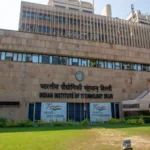
NASA has reported that today, Earth will experience a close encounter with Asteroid 2024 GV3, a space rock roughly the size of a bus, which will pass by our planet at a proximity of about 317,000 miles—closer than the moon’s average distance of 239,000 miles. While the thought of such a near miss might seem alarming, NASA assures that the asteroid poses no threat and will harmlessly continue its journey through space after its close approach.
Key Points About Today’s Asteroid Flyby
- Distance and Dimensions: Asteroid 2024 GV3 will cruise by Earth at a distance of 317,000 miles, making it one of the closer celestial flybys recently recorded. The asteroid measures an estimated 21 feet in width.
- No Threat to Earth: Despite its proximity, there is no risk of impact. NASA’s vigilant tracking systems confirm that the asteroid will make a safe passage, merely brushing by Earth before heading back into deeper space.
- Part of a Larger Group: On the same day, four other asteroids will also make close approaches to Earth. However, none of these will come as close as 2024 GV3, with distances ranging from 545,000 miles to 2,370,000 miles.
- Scientific Significance: While the immediate threat from asteroids like 2024 GV3 is minimal, these celestial bodies are of great scientific interest. A recent study by the Southwest Research Institute (SwRI) revealed that asteroids might carry water molecules, suggesting they could play a role in delivering essential compounds to planets, including Earth. This discovery provides valuable insights into the composition of asteroids and their potential role in the early solar system.
Today’s event serves as a reminder of the dynamic nature of our solar system and the importance of continuous monitoring of celestial objects. Such encounters not only offer a chance for scientific study but also test our preparedness for potential future threats. As space agencies like NASA keep a vigilant eye on these cosmic wanderers, the knowledge gained extends our understanding of the universe and enhances the safety of our planetary neighborhood.




































Leave a Reply